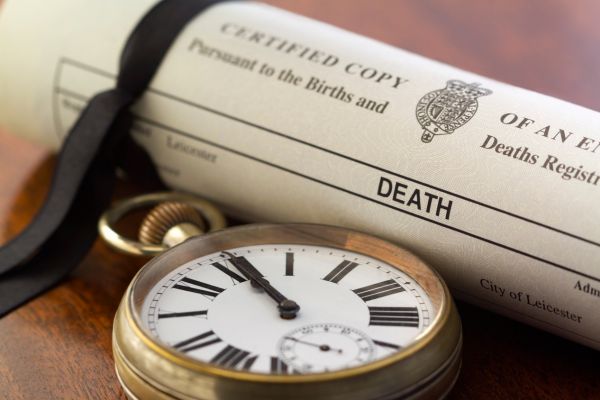Product liability cases can have significant impacts, both legally and financially, on businesses and consumers. When a product is defective or dangerous, and someone is harmed as a result, the manufacturer or seller can be held responsible. This concept of “product liability” encompasses a wide range of legal issues, from faulty appliances to unsafe pharmaceuticals. In this article, we’ll delve into various product liability cases examples, their outcomes, and the legal principles that govern these types of lawsuits.
Every day, we rely on countless products to make our lives easier and safer. From the cars we drive to the medicine we take, we assume these items are designed and manufactured with our safety in mind. But what happens when a product fails, causing harm or injury? That’s where product liability law steps in.
In the U.S., product liability laws are designed to protect consumers from defective products. These laws hold manufacturers, distributors, and sellers accountable for any injuries or damages caused by their products. Whether it’s a faulty brake system in a car or a poorly designed household appliance, consumers have the right to seek compensation. Let’s explore some real-world examples to better understand how these cases unfold in court.
What Is Product Liability?
Before diving into specific cases, it’s essential to grasp the three primary types of product defects that can lead to a product liability lawsuit:
- Manufacturing Defects: These occur when the product deviates from its intended design due to errors in the manufacturing process. Even if the design is safe, a flaw during production can make the product dangerous.
- Design Defects: These exist when a product is inherently unsafe due to its design. Even if manufactured correctly, the product’s design itself may pose risks.
- Failure to Warn (Marketing Defects): This arises when a product lacks proper instructions or warnings about potential dangers, leading to injuries that could have been avoided.
Real-World Product Liability Cases
Now, let’s take a closer look at some product liability cases examples that illustrate the principles mentioned above.
1. The Ford Pinto Case (1970s)
One of the most infamous product liability cases is the Ford Pinto case. In the 1970s, Ford Motor Company faced lawsuits after their Pinto model cars were prone to catching fire in rear-end collisions. The issue stemmed from a design flaw where the fuel tank was placed too close to the rear bumper, leading to deadly explosions when the car was struck from behind.
What made this case stand out? Ford was aware of the issue but decided against recalling the vehicles due to cost concerns. This decision backfired, leading to multiple lawsuits, tarnishing Ford’s reputation, and eventually forcing a recall. The case highlighted the importance of putting consumer safety above profit margins.
2. McDonald’s Hot Coffee Case (1994)
You’ve likely heard of the McDonald’s hot coffee case, but there’s more to it than meets the eye. Stella Liebeck suffered third-degree burns after spilling a cup of McDonald’s coffee in her lap. The coffee was served at a temperature far higher than what is considered safe for consumption. Liebeck sued, and the case was eventually settled for a large sum, though much of the media coverage at the time misrepresented the details.
This case raised awareness about failure to warn claims, as McDonald’s failed to adequately warn customers about the unusually high temperature of their coffee. It also sparked a debate on the limits of personal responsibility versus corporate accountability.
3. Johnson & Johnson’s Talcum Powder Case
Another high-profile product liability case involved Johnson & Johnson’s talcum powder products. Plaintiffs in numerous lawsuits claimed that the company’s baby powder contained asbestos, a known carcinogen, and that prolonged use led to ovarian cancer. Johnson & Johnson faced billions in damages after courts found that they failed to warn consumers about the potential risks associated with their product.
This case is an example of a design defect and failure to warn, showcasing the devastating impact of companies not disclosing critical information about product risks. Johnson & Johnson is still grappling with the fallout from these lawsuits.
Key Legal Principles in Product Liability
While these cases vary in terms of product type and the nature of the defects, they all share common legal principles that guide product liability lawsuits. Let’s break down some of the essential concepts:
- Strict Liability: In most product liability cases, the plaintiff doesn’t need to prove that the manufacturer was negligent. They only need to show that the product was defective and caused harm. This is known as strict liability.
- Breach of Warranty: If a product doesn’t meet the seller’s claims or the expectations of the consumer, a breach of warranty can be argued. This is often seen in cases where the product doesn’t function as advertised.
- Negligence: Sometimes, product liability cases also involve negligence, particularly in failure to warn cases. If a company knew or should have known about the risks of their product and failed to warn consumers, they could be held liable for negligence.
Common Defenses in Product Liability Cases
Manufacturers and sellers often have defenses to product liability claims. Some of the most common ones include:
- Assumption of Risk: The defendant may argue that the plaintiff knowingly used the product despite being aware of the risks involved.
- Product Misuse: If a consumer used the product in a way it wasn’t intended, the manufacturer could claim the injury was a result of misuse and not a product defect.
- Comparative Negligence: In some cases, the injured party may be partially responsible for their injury. For example, if the user ignored warnings or failed to use the product safely.
FAQs
Q: What are the most common types of product defects in liability cases?
A: The three most common types are manufacturing defects, design defects, and failure to warn (marketing defects).
Q: Can I sue if I’m injured by a product I was using improperly?
A: It depends. If the injury was caused solely by improper use, the manufacturer may not be liable. However, if the product was dangerous due to a defect, you might still have a case.
Q: What kind of compensation can I receive in a product liability case?
A: Compensation typically covers medical expenses, lost wages, pain and suffering, and sometimes punitive damages, depending on the severity of the case.
Conclusion
Product liability cases can be complex, but they play a crucial role in holding companies accountable for the safety of their products. From defective vehicles to dangerous household goods, countless products have the potential to cause harm if they aren’t properly designed, manufactured, or labeled. As we’ve seen from these product liability cases examples, the outcomes can be financially devastating for companies and life-changing for consumers.
Understanding the principles behind product liability, the types of product defects, and how the legal system handles these cases is essential for both consumers and businesses. If you’ve been injured by a defective product, it’s always a good idea to seek legal advice to understand your rights.
Authoritative Links
- www.law.cornell.edu
- www.consumer.ftc.gov
- www.jdsupra.com
- www.justia.com


